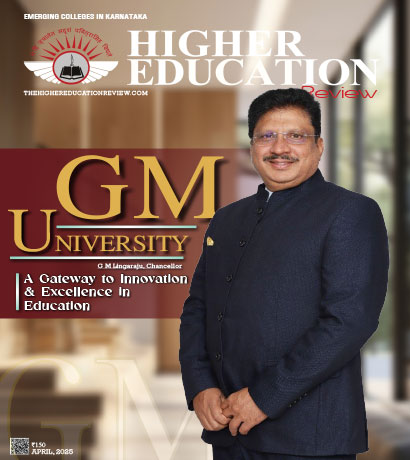The Changing Landscapes of Higher Education in CIS Countries
 After the dissolution of the Union of Soviet Socialist Republics (USSR) in 1991, a new association took its place which consisted of some of the former soviet republics and it is called Commonwealth of Independent States (CIS). At present, CIS consists of Azerbaijan, Armenia, Belarus, Kazakhstan, Kyrgyzstan, Moldova, Russia, Tajikistan, Turkmenistan, Uzbekistan and Ukraine. CIS is considered to be more of a symbolic organization with little real power and yet, the role it plays as a foundation for collaborative efforts in the region can’t be overlooked. And in the late 90’s some of the member states in CIS started to establish a more active collaboration especially when it comes to developing their economies. This even includes a common market space as well as a customs union. Then, in 2000, the heads of Belarus, Kazakhstan, Kyrgyzstan, Russia, and Tajikistan established the Eurasian Economic Community more commonly known as EAEC and it aims to become one of the leading powers in the region.
After the dissolution of the Union of Soviet Socialist Republics (USSR) in 1991, a new association took its place which consisted of some of the former soviet republics and it is called Commonwealth of Independent States (CIS). At present, CIS consists of Azerbaijan, Armenia, Belarus, Kazakhstan, Kyrgyzstan, Moldova, Russia, Tajikistan, Turkmenistan, Uzbekistan and Ukraine. CIS is considered to be more of a symbolic organization with little real power and yet, the role it plays as a foundation for collaborative efforts in the region can’t be overlooked. And in the late 90’s some of the member states in CIS started to establish a more active collaboration especially when it comes to developing their economies. This even includes a common market space as well as a customs union. Then, in 2000, the heads of Belarus, Kazakhstan, Kyrgyzstan, Russia, and Tajikistan established the Eurasian Economic Community more commonly known as EAEC and it aims to become one of the leading powers in the region.
Over the last decade, member countries of CIS is giving major emphasis on improving the quality of higher education in the region and by doing so, develop into an international education hub for students from across the globe. And they are focusing on three key areas in improving the quality of higher education in CIS countries. Let’s analyze these segments and see how it is improving the quality of education in CIS region.
Increasing International Appeal
CIS countries are now focusing more on the internationalization of education in the region and this is further highlighted in the fact that last year in Russia, the government expenses for services offered by HEIs reached 385,000 Russian rubles per student. And Belarus with their project titled- "Belarus - Higher Education Modernization” is aiming to improving the learning environment in the country. While these two are just some of the examples, there has been a palpable shift in focus when it comes to internationalization of higher education in CIS countries. The inception of more international relations departments in many universities in the region can also be seen as a welcoming change. While some might not understand the significance of independent international relations departments in educational institutions, these entities engage in expanding international partnerships which allows for faculty and student exchange programs, dual degree courses, and collaborative research. Most of these international tie-ups are happening with other educational institutions in Europe as well as Asia. The significant increase in the number of English taught programs in CIS universities can also be seen as a clear change in focus of these institutes in becoming a more appealing study destination for international students. And by doing so, educators and policy makers in the region aspires to climb the list of top international study abroad destinations in the world.
Cooperation in Pedagogical and Educational Sciences
Cooperation between CIS countries especially in the field of education has helped the region to develop a sustainable educational infrastructure and ensure economic development. More importantly, these collaborations have helped CIS countries to nurture talented human capital that has played a crucial role in improving the economies of the counties in the region. These collaborations are aimed at improving the main areas of the education reform up till 2030. At the same time, educators and policy makers in the region are also working towards the development of the common CIS education space which is an important initiative that can help enhance the quality of education in CIS countries even more. This common education space also aims at increasing the unity and integrity of the region to greater heights by focusing on educational relationships. Last year, during the festival of Pedagogical Skills of Teachers and Educators of the CIS member states, member counties of the CIS region convened in the national library of Tajikistan to discuss about the sustainable development of higher education in CIS countries. These programs aspire to bring together educators and policy makers of CIS countries together and accelerate the quality of their education even more by collaborating and cooperating with each other.
Training Teachers
Teachers in an education system play a crucial role in nurturing the next generation of capable individuals and CIS countries are now focusing more on improving the quality of their teachers so that, they can help students realize their true potential. And in a webinar that was a part of “Media and Information Literacy in the Digital Age: How to Teach the Teachers”, educators from CIS countries discussed about the importance of integrating media as well as information education into their training. The program was initiated by UNESCO IITE and the UNESCO Information for All Programme and it was in partnership with Moscow State Pedagogical University (MSPU) and Eurasian Association of Pedagogical Universities (EAPU). The webinar talked in detail about the potential of information and media literacy integration to teacher training. And heads of 46 universities from CIS countries participated in a study where they unanimously proposed to include the same in their educational programs. They view this as an essential step to increase the quality of education they offer and many universities are even aiming to conduct scientific research in this field to realize its true potential.
By focusing on these three key areas, CIS countries aspire to not only increase the quality of their education but also become more fiercely competitive in the global higher education space. These improvements will also allow these countries to create skilled talent who can make significant contributions towards the socio-economic development of CIS countries. And through this three-pronged strategy, CIS countries are aiming to develop a sustainable educational infrastructure that benefits the learners, educators and the countries alike.

